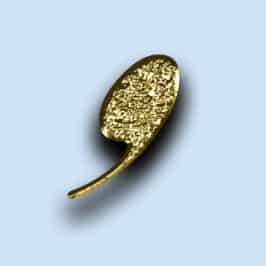
Do you know your editor USP? Your unique selling point will determine your ideal client, the type of content you edit, and what you (and only you) offer.
As a freelance editor, you’re responsible for your whole business. It’s not enough to get your head down and do the actual editing and proofreading, you also need to wear the entrepreneurial hats of finance, marketing, web manager and CEO.
A crucial element of being your own boss is knowing your USP.
What is a USP?
USP stands for ‘unique selling point’, also known as a ‘unique selling proposition’. It is what sets you apart from other editors. To attract your ideal clients, you need to stand out from the competition, and you do that by making it clear that you offer something no one else does.
Sure, you offer various levels of editing (developmental, line, copy or proofreading) just like many other editors, but what is it about you that is unique? This could be one or more of the following:
- your target audience (e.g. self-published mystery authors, academic publishers, entrepreneurs, first-time authors)
- your niche (e.g. memoirs, cookery books, cozy mysteries)
- your background or experience (e.g. military, engineering, marketing, languages)
- your personality (e.g. enthusiastic, friendly, calm, energetic)
- something else!
Think of your USP as an elevator pitch for when your ride is just one floor. It sums up what you offer in a sentence or two in a memorable, unique way.
You may already edit in a niche but may not be attracting the types or numbers of clients you would like. You may be a jill- or jack-of-all-trades, looking to narrow your editing offerings but not sure where to start. Whichever applies to you, a USP can help.
You may be a jill- or jack-of-all-trades, looking to narrow your editing offerings but not sure where to start. – How to find your editor USP Share on XOnce you come up with a brilliant USP, you can use it in your online marketing, on your website, at conferences … anywhere!
What makes a good USP?
When figuring out your USP, make it:
- Memorable – Your ideal clients could see you on social media but may not need your services right away. Your USP will help them to remember you, so when they do need an editor, they think of you immediately.
- Tangible – Make sure you can back up any claims made in your USP. It needs to highlight your strengths, which must be provable. This can be done via social proof (testimonials etc), your experience and the content you put out into the world (e.g. blog posts).
- Customer-focused – It’s not about you; it’s about your clients. This is one of the most basic rules of marketing, and should be reflected in your editor USP.
- Contrast with competitors’ USPs – What are you offering that no one else is? How are your services better than or different from those offered by other editors? Why should your ideal clients choose you?

How do I work out my editor USP?
To come up with your USP for your editing business, try the following steps.
1. Long-list your qualities
Make a list of your unique attributes that may or may not be related to your editing business. Don’t think too hard about it, as you’ll be refining the list in a later step. Just scribble words down on a sheet of paper that relate to the aspects in the list below.
Include specifics, e.g. not just your education but where you studied. This will help you to work out what is unique about your offering. Consider:
- Your past experience, even if it doesn’t seem to be related to editing. For example, think about past jobs you’ve had, your hobbies (past and present), and education.
- Membership of any professional organizations, whether connected to editing or not.
- Your personality and attitude. How would your friends and family describe you? How have past clients talked about you in testimonials? e.g. friendly, professional, calm, introvert, extravert, bonkers, thorough.
- Places you know well. This could be where you’ve lived, worked, or gone on holiday.
- Editing projects that you’ve particularly enjoyed, and those you really could have done without. e.g. You may have loved working on that medical thesis last year, but struggled to get excited about the children’s picture book you edited last month.
- Your other “hats”, e.g. Are you a writer? Do you do volunteer work? Are you a parent?
- Your identity. This could include your gender, sexuality, religion, skin colour, ethnic background and more.
- Anything else that springs to mind.
Many items may not seem immediately relevant to your editing services. However, there may be some things on your list that you’d never considered including as part of your offering. This long-list step often leads to a lightbulb moment!
2. Short-list your qualities
Cross off things on your longlist that definitely won’t be part of your editing offering. You may love hamsters and know everything about them, but really couldn’t face editing content about them day in, day out. (Or maybe you could!)
Leave the elements on your list that truly define you, that you’re passionate about, and that are unique to you.
3. Decide on your ideal client(s) and work out what they want
Up to this point in your editing business, you may not have been targeting a specific type of client. You may have been using a scattergun approach, trying to appeal to everybody. It’s time to narrow your field of view. This will help you tailor your marketing and thereby appeal to the “right” people.
Think about what they are looking for, and what their pain points are. What problem do they have that you can solve? A first-time self-published author, for example, may prefer an editor who is kind and friendly, whereas a traditional publisher probably won’t mind so much if you’re a grouchy so-and-so, as long as you get the job done to an exceptional standard. The editor of a comic strip will be seeking a different personality than the editor of a magazine about life in the country.
A traditional publisher probably won't mind so much if you're a grouchy so-and-so, as long as you get the job done to an exceptional standard. – How to find your editor USP Share on XIf you have any of your ideal clients in your network, have a chat with them to find out what is important to them when looking for an editor. Ask past clients why they chose you instead of another editor, and what they liked about working with you.
4. Draft your editor USP
Using some key points from the steps so far, make a first stab at your USP. Try writing a few different ones that contain different elements, so you can try them on for size, so to speak.
Make it as unique to you as possible.
Remember, it needs to be:
- Memorable
- Tangible
- Customer-focused
- Different from competitors’ USPs
5. Seek feedback about your editor USP
If possible, ask some friendly folk in your network what they think of your USP. Ideally, these will be your ideal clients, but other editors who are experienced in the business and marketing side of editing will also be able to offer advice.
6. Tweak and launch your editor USP!
Make any necessary changes following the feedback, then use your USP in marketing, on your website and anywhere else your ideal clients might see it.
Example editor USPs
Here are some example USPs for different editors that may inspire you:
I’m a proofreader with a background in setting up and marketing a bungee-jumping business. I’m passionate about supporting extreme-sports magazine editors so they can be confident they’re providing a high-quality publication to their readers.
As a professionally trained editor of romance and erotica, I help spare the blushes of traditional publishers so they can provide an unadulterated, smooth read.
If you need more inspiration, take a look at these example USPs from famous brands on thegood.com.
Over to you
Are you thinking of working on your editor USP? Do you already have one? Let me know in the comments!








How to use social proof to sell more books or attract more clients
You are more likely to sell your book or your services if people see that...